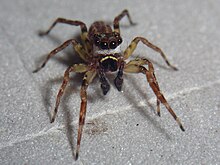Amphidraus is a genus of South American jumping spiders first described by Eugène Simon in 1900. It was previously considered a synonym of Nebridia, but this was later rejected by Jerzy Prószyński, who claimed that merging the two genera wasn't supported by previous diagnostic drawings.
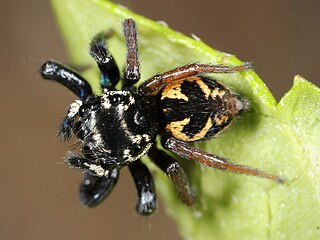
Corythalia is a genus of jumping spiders that was first described by Carl Ludwig Koch in 1850. The genus is distributed throughout most of the Western Hemisphere. Species of this genus are found in The Americas.
Goleba is a genus of African jumping spiders that was first described by F. R. Wanless in 1980.

Lyssomanes is a spider genus of the family Salticidae, ranging from South and Central America, up to the southern United States.
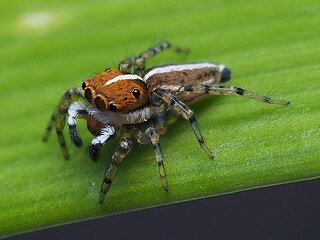
Maeota is a spider genus of the jumping spider family, Salticidae.
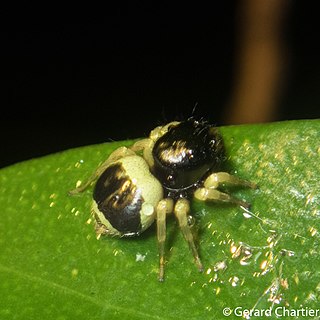
Pystira is a genus of spiders in the jumping spider family Salticidae.
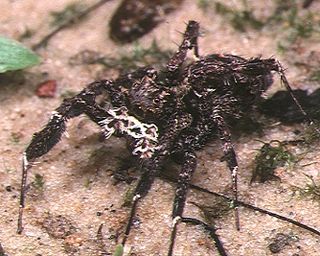
The Spartaeinae are a subfamily of the spider family Salticidae. The subfamily was established by Fred R. Wanless in 1984 to include the groups Boetheae, Cocaleae, Lineae, Codeteae and Cyrbeae, which in turn were defined by Eugène Simon.
Galianora is a genus of Ecuadorian jumping spiders that was first described by Wayne Paul Maddison in 2006. As of June 2019 it contains only two species, found only in Ecuador: G. bryicola and G. sacha.
Thrandina is a genus of jumping spiders, with three species found in Ecuador. It is unique among New World salticids in having strikingly large posterior median eyes.
Galianora sacha is a species of jumping spider from Ecuador.
Galianora bryicola is a species of jumping spider from Ecuador.

Lyssomaninae is a subfamily of jumping spiders. It includes four genera, three from the New World.

María Elena Galiano was an Argentine arachnologist. She was one of the leading taxonomists of Neotropical jumping spiders. Galiano worked at the Bernardino Rivadavia Natural Sciences Museum in Buenos Aires. She died in an accident on October 30, 2000. The genera Galianora and Galianoella are named in her honor.
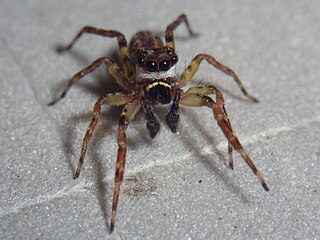
Lapsias lorax is a species of lapsiine jumping spider from Ecuador.

Colonus is a genus of spiders in the jumping spider family, Salticidae. Colonus species are endemic to North and South America, ranging from New York to Argentina. All members of the genus have two pairs of bulbous spines on the ventral side of the first tibiae. The function of these spines is unknown. Colonus was declared a junior synonym of Thiodina by Eugène Simon in 1903, but this was reversed by Bustamante, Maddison, and Ruiz in 2015.

Sumakuru is a genus of jumping spiders in the subfamily Lyssomaninae. It was first described in 2016 by Wayne Maddison. Both males and females are very small compared with other species in Lyssomaninae. As of 2017, it contains two species:
Matinta is a genus of South American jumping spiders. The largest number of species are found in Brazil.

Hisponinae is a subfamily of jumping spiders. The subfamily has six known extant genera and three extinct genera.

Amilaps is a monotypic genus of jumping spiders containing the single species, Amilaps mayana. It was first described in 2019 by Wayne Maddison, who originally collected the type specimen in 1983 in Teapa, Mexico. The genus was tentatively placed in the tribe Lapsiini, a division of the subfamily Spartaeinae.
